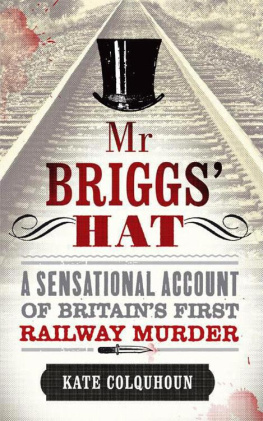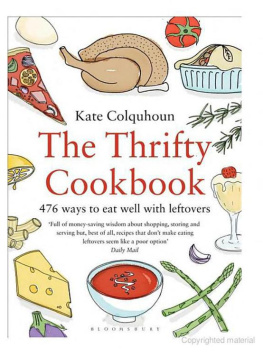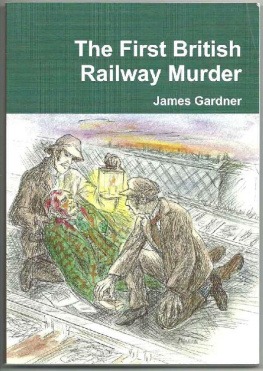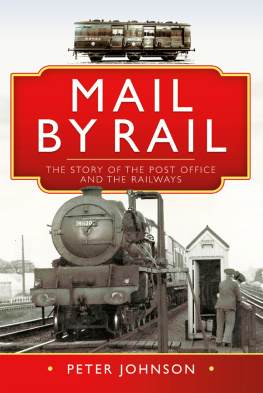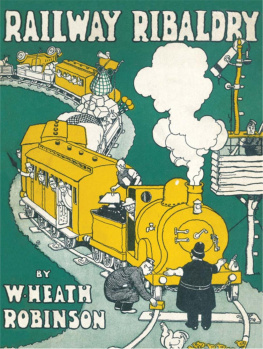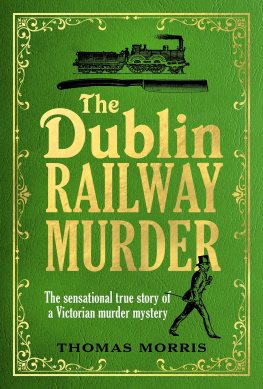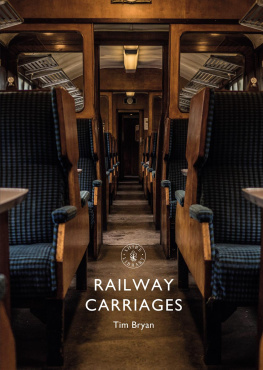Kate Colquhoun s previous non-fiction titles were shortlisted for the Duff Cooper Prize 2004 and longlisted for the Samuel Johnson Prize 2003. As well as writing for several newspapers and magazines, she appears regularly on national radio and television. She lives in London with her husband and two sons.
Published by Hachette Digital
ISBN: 978-0-748-11567-9
Copyright 2011 by Kate Colquhoun
All rights reserved. No part of this publication may be reproduced, stored in a retrieval system, or transmitted, in any form or by any means, without the prior permission in writing of the publisher.
Hachette Digital
Little, Brown Book Group
100 Victoria Embankment
London, EC4Y 0DY
www.hachette.co.uk
For those who shine light into dark corners

Central London. Detail from the 1862 Weekly Dispatches map of London.
Contents
What began with shock quickly developed into nervousness, fear and then destabilising doubt. From a muggy July in 1864 to a freezing November, not only London then the greatest city in the world but much of Europe and even North America was galvanised by the events described by the newspapers of the time as a terrible drama of real life .
The details of this account are drawn from primary record.
On the evening of 9 July 1864, Benjamin Ames, a thirty-eight-year-old train guard, was on edge. The 9.45 p.m. from Londons Fenchurch Street terminus to the Stepney at 9.55 p.m., Bow at 10.01 p.m. and Hackney Wick (also known as Victoria Park) Station just four minutes later at 10.05 p.m.
At 10.10 p.m. they had arrived at Hackney Station the midway point on the line but as Ames hurried to slam the carriage doors he was irritated to hear a commotion coming from the front of the train, threatening to scupper all his attempts to get it back on time. Harry Vernez and Sydney Jones, both employees in the banking house of Robarts, Curtis & Co. in the City, were calling out that something was wrong. The young clerks had just installed themselves in an empty compartment of the furthest forward of the varnished teak first-class carriages when Jones discovered blood on his hands and on the seat of his trousers.
Like most English locomotives at that time, each varnished teak carriage of the North London Railway train was divided into several separate, isolated compartments. Doors on either side, usually locked before leaving each station, opened onto the platform or the tracks but there was no communication corridor or door between them. Once in motion, passengers were unable to call to the driver, the guard or to passengers travelling in adjoining sections of the carriage.
Each box-like room had two pairs of seats on either side, divided by an armrest, and was so narrow that ladies sitting opposite each other found their voluminous skirts pressed together and fussed with the ends of their shawls to prevent them becoming entangled. The stuffed seat cushions were upholstered in buttoned blue cloth with tough American leather underneath. On the floor was a strip of rough cocoa matting and overhead swung luggage racks made of thickly meshed cord. Each of the side windows was barred with sturdy brass rods to prevent passengers leaning out and each had a leather strap for passengers to steady themselves against the jolting of the locomotive. A single, smoky gaslight hung in the centre of the wooden partition wall, casting an unnatural yellow glow.
Cursing the fuss being made by the clerks, guard Ames retreated to his brake van at the extreme end of the train to fetch a bright hand-lamp and returned to enter the clerks compartment, raising it before him. was an upturned cushion.
As the guards eyes adjusted to the light he was dimly aware that the air of the compartment was sickly-sweet. Then it dawned on him that some kind of vicious struggle had taken place. On the left-hand side nearest the engine blood pooled in the buttoned indentations of the cushions. It was still wet. Another large red spatter about the size of a crown piece trickled down the glass pane of the quarter-light on the same side, skirting round a small piece of what looked, to him, like flesh.
On the platform behind him a group of ladies who had just got out of the next-door compartment were complaining that their dresses and capes had been stained by drops they thought them blood flying through the open window of their carriage while the train was still moving. Further along the platform, unaware of the dreadful scene revealing itself under the glare of the guards lamp, departing passengers queued to relinquish their tickets at the narrow gate before passing out into the emptying streets of Hackney. Other travellers with tickets for stations further down the line were taking their seats and expecting the train to pull out at any minute. The driver was waiting for his signal to go.
Ames heard only the buzzing of a fly as he stepped further into the empty carriage. He saw that small drops of blood had sprayed out over the seats on the left-hand side, hitting the padded armrest. Dark marks along the edges of the cushions suggested that bloody hands had been wiped along them. Turning to his right, he noticed, too, that the cloth of the armrest on that side was also saturated.
From the quantity of liquid blood it was apparent that someone had been brutally beaten in the carriage. But Ames had seen no evidence of a wounded man or bloodied assailant when the train stopped at Stepney, Bow or Hackney Wick stations. He had received no reports of screams for help. Had there been no such bellows? It would have been impossible for anyone outside the compartment to have witnessed what had occurred but it seemed extraordinary that such an attack could have gone unheard by anyone in the adjoining compartments. In the stillness of the evening the silent carriage held, for Ames, a chilling echo of menace.
Taking in the fact that the floor matting had been shoved aside, Ames stepped towards the far side of the compartment, his raised lamp revealing, bit by bit, that the walls and open windows were also sticky with blood. The handles of the off-side door (closed, but unlocked) also appeared to be covered in congealing blood, both inside and out. The engine of the train grumbled, vibrating through the carriages as they lingered at the station. Peering through the window onto the track side of the train Ames saw no sign of movement, nothing odd. Even the sky was peaceful the birds now tucked in safely under the eaves of the platform roof.
Turning again, lamp in hand, Ames noticed for the first time that the carriage was not as empty as he had at first thought. On the furthest left-hand seat of the carriage was a discarded black leather bag, its brass lock open and marked with darkening red smears. Looking under the same seat, he found a black hat, squashed nearly flat, bearing a makers name: T. H. Walker, Crawford Street, Marylebone. On the floor close to it lay a thick cane topped with a heavy ivory knob a life preserver as it was known. It too was marked with a few red spots.
Pulling himself together, Ames drew up the compartment windows, retreated, and locked the doors behind him. Determined to get the train back on schedule, he gave urgent instructions to the Hackney stationmaster to send a telegraph to the railway superintendent at Chalk Farm. Then, stepping up into his brake van, he signalled for the driver to continue.
Though, for the guard, time had appeared to stall, the train had halted at Hackney Station for a mere four minutes. By a quarter past ten it was ploughing on through the warm summer night, preparing to deliver its last few passengers to the handful of remaining stations along the line.
Next page
